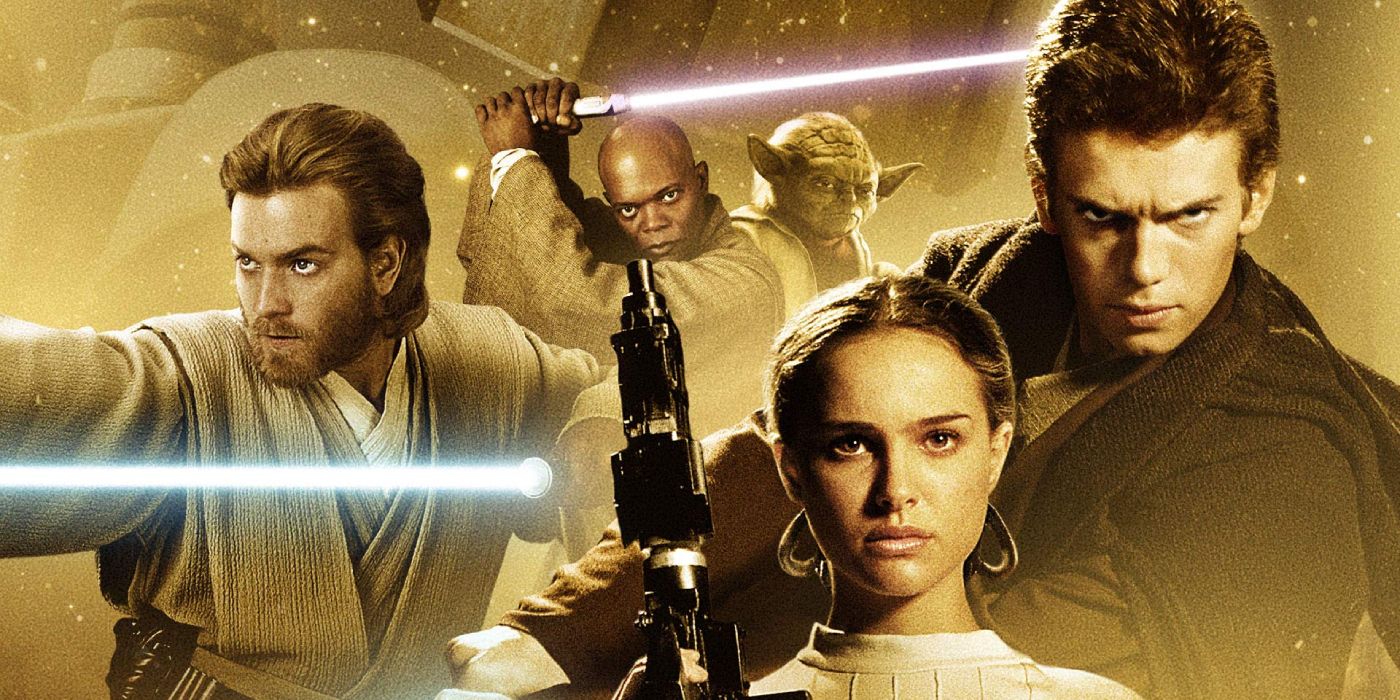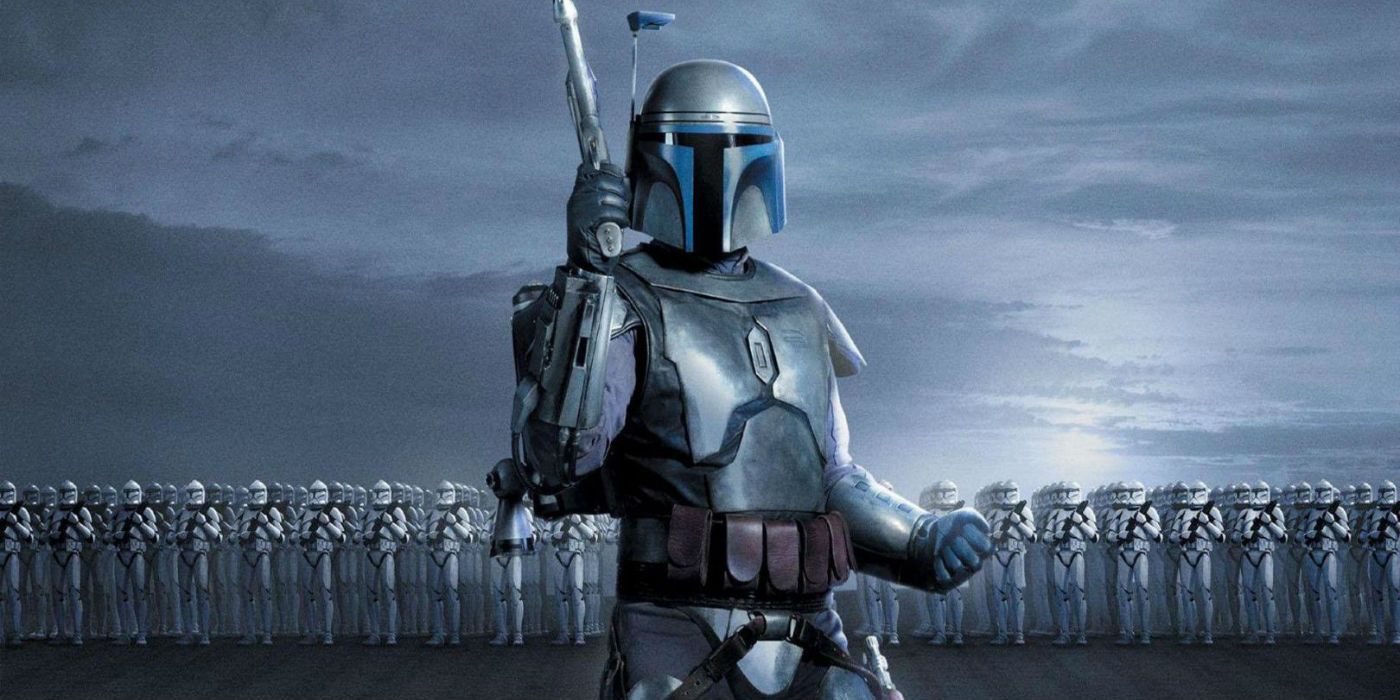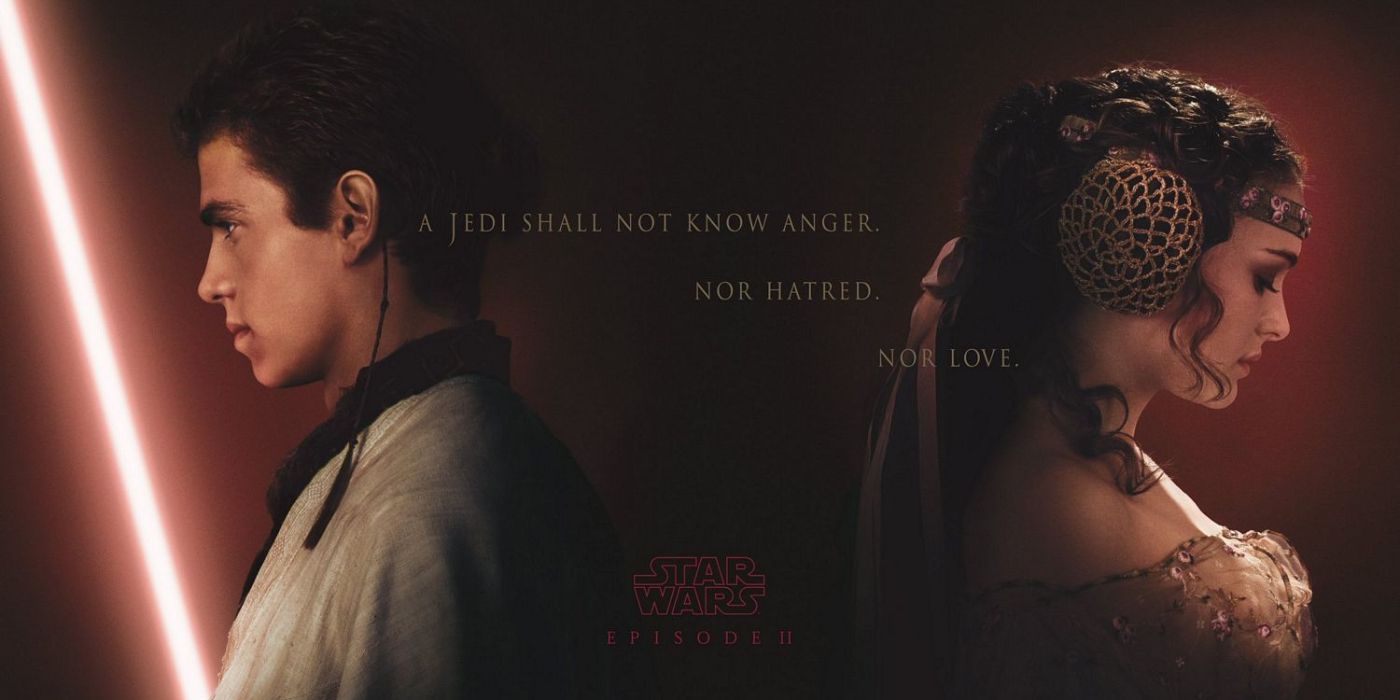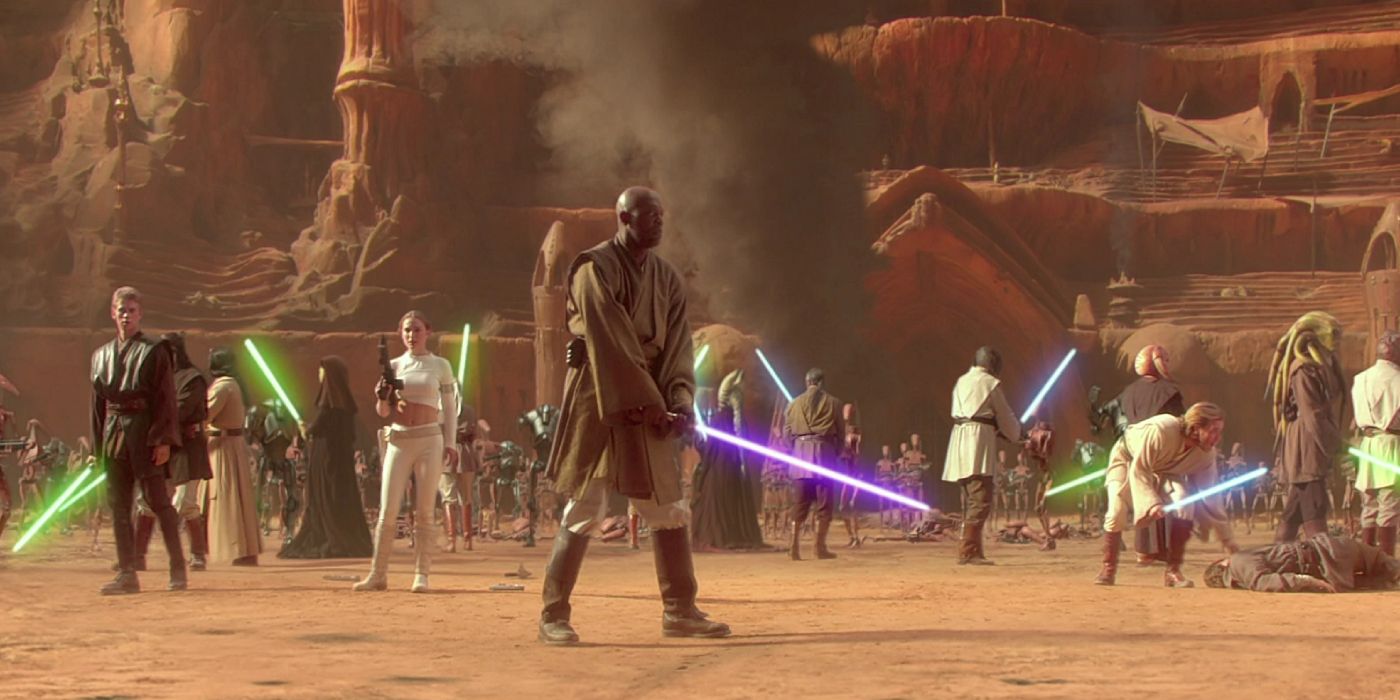Star Wars: Episode II - Attack of the Clones, from 2002, gets a bad rap. Over the years, the Prequel Trilogy's second entry has almost unanimously been dubbed the worst Star Wars film by fans and critics alike, often being placed below even 1999's The Phantom Menace in most fan rankings. (Episode I has its own redeeming qualities, mind you, but that's a different conversation entirely.)
Attack of the Clones is certainly flawed. The overuse of CGI can be distracting, the soap opera-esque dialogue has become joke fodder and certain characters, namely Padmé Amidala, definitely could have been treated a lot better by the script. However, to dismiss Episode II on these grounds alone is to do a great disservice to everything the film gets right -- and it does get a lot right, something more and more people at least appear to be warming up to.
After all, the Prequels as a whole are nowhere near as universally reviled in the Star Wars fandom as they once were. This is largely due to the fact that the generation that grew up with them now has a real seat at the table, so discourse regarding the franchise is no longer dominated by Original Trilogy purists.
It's a cliché at this point, but the Prequel Trilogy really does play out like a Shakespearian tragedy. It follows Anakin Skywalker, a boy not only burdened with the responsibility of being the Chosen One, but whose allegiance to the dogmatic Jedi Order forbids him from processing the tremendous amount of fear, anger and sadness he carries with him -- not to mention the love he feels for Padmé. Anakin wants nothing more than to protect the people he cares about, a desire that blinds him to the fact that he's being manipulated by the would-be tyrant Chancellor Palpatine, which, ultimately, proves to be his undoing. At its core, Anakin's fall from grace is an incredibly effective story -- and Attack of the Clones is its backbone. Without it, the whole thing falls apart.
By Revenge of the Sith, Anakin's actual turn to the Dark Side of the Force is merely a formality, as Attack of the Clones is where he truly crossed the Rubicon. The moment his mother dies in his arms and he turns his murderous rage against the Tusken Raiders vowing never to let someone he loves die again, he is setting himself up for his greatest failure. And the second he marries Padmé, his fate is sealed. As a viewer watching them get married, you want to believe they're going to get their happily ever after. But if you've seen the Original Trilogy, you know that doesn't happen, which makes the story all the more tragic.
On the subject of Anakin, let's talk about Hayden Christensen, because like the film itself, he absolutely does not deserve most of the flak he gets for his performance. Sure, a lot of the dialogue he's made to deliver doesn't really work. (George Lucas himself explained that the Prequels are melodramatic on purpose, but there is a limit.) However, almost anyone who says they could deliver the line "I don't like sand" and not have it turn out unintentionally funny is a liar. In addition, Christensen's non-verbal acting is genuinely great. The sheer range of emotions he can convey with his eyes alone is palpable -- just look at Shmi Skywalker's death scene.
Attack of the Clones has plenty of other positives going for it as well, such as solid performances by the likes of Natalie Portman as Padmé, Christopher Lee as Count Dooku, Temuera Morrison as Jango Fett, Samuel L. Jackson as Mace Windu and, of course, Ewan McGregor as Obi-Wan Kenobi. In fact, Episode II arguably set the standard for that trademark Kenobi sass, which is only amplified by the great chemistry McGregor and Christensen share. McGregor's Obi-Wan has become one of the most beloved parts of the Prequels, and Attack of the Clones deserves just as much credit for that as the other two films.
The aforementioned Dooku is also deserving of praise. While Star Wars: The Clone Wars is often credited with improving the canon established by the Prequels, Attack of the Clones' depiction of the Count is actually better than anything the acclaimed animated series did. Lee's Count Dooku is one of the most nuanced Star Wars villains ever seen. Whereas The Clone Wars was content to make the character another Sith who's evil just because he is, Episode II's version was complex in his motivations and beliefs -- and he brought up valid points regarding the corruption of the Republic and the arrogance of the Jedi. This may well have been nothing more than a ploy to sow distrust, but Dooku wasn't wrong in his observations.
There are also some fun action set pieces to enjoy in the movie. The Battle of Geonosis was the first real on-screen glimpse at what the Jedi were capable of in their prime; the duel between Yoda and Count Dooku made for an interesting contest in its own right; and the brawl between Obi-Wan and Jango Fett on Kamino is honestly more reminiscent of The Mandalorian than pretty much anything Boba Fett did in the Original Trilogy. While a lot of the film's attempts at humor kind of fall flat, there are some genuinely funny moments on display as well. The sequence where Obi-Wan uses a mind trick on the death-stick dealer in the opening act alone is more than worth the price of a movie ticket.
Is Attack of the Clones perfect? No, far from it. And of all the canon, live-action Star Wars films, it may very well rank near the bottom. But it's also a very misunderstood movie. It may not have the best visuals or the best dialogue, but it is a fun film that, thematically, accomplishes everything it sets out to do. At the end of the day, it is an indispensable chapter in the Star Wars mythos.




